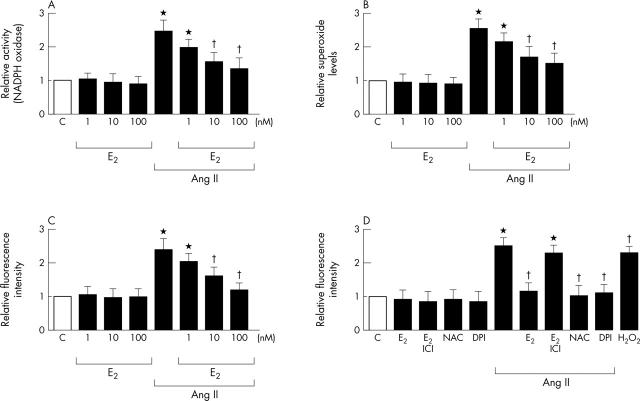Figure 3.
Effects of E2 on Ang II increased NADPH oxidase activity and reactive oxygen species (ROS) formation. Cells were preincubated with E2 (1–100 nmol/l) for 12 hours and then stimulated with Ang II (100 nmol/l) for 30 minutes or not. *p < 0.05 v C; †p < 0.05 v Ang II alone. (A) Effect of E2 (1–100 nmol/l) on Ang II increased NADPH oxidase activity. Cardiac fibroblasts after treatment were lysed and immediately assayed for NADPH oxidase activity. (B) Effect of E2 (1–100 nmol/l) on Ang II induced superoxide formation. Cardiac fibroblasts after treatment were lysed and immediately assayed for superoxide by the lucigenin method. (C) Effect of E2 (1–100 nmol/l) on Ang II induced ROS generation. Fluorescent intensities of dichlorofluorescein showed that intracellular ROS concentrations were increased by Ang II. (D) Effects of E2, E2 plus ICI, or antioxidants on Ang II induced ROS generation. Cells were preincubated with E2 (100 nmol/l), the combination of E2 plus ICI (1 µmol/l), or the antioxidant N-acetylcysteine (NAC) (10 mmol/l) or diphenyliodonium (DPI) (10 μmol/l) and then stimulated with Ang II (100 nmol/l) for 30 minutes or not. H2O2 (100 μmol/l) was used as a positive control.

